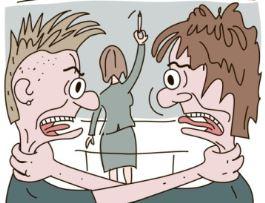Report: Violence dips in elementary schools
According to the data, between 2008-2009 and 2012-2013 there was a drop in the percentage of students reporting they were victims of serious violence (blows, threats or extortion) in grades four to six and seven to nine, but such reports were stable for grades 10-11. Eleven percent of the students reported such violence in grades four to six, 8 percent in grades seven to nine and 6 percent in grades 10-11.
There was also a drop in the percentage of students reporting social violence (ostracizing, spreading rumors and the like). In elementary school, such reports dropped from 38 percent in 2008-2009 to 24 percent in 2012-2013. In junior high school, they dropped from 26 percent to 20 percent. In high school, they dropped from 19 percent to 15 percent.
Reports of digital violence (via the Internet or cell phones), remained stable at 8 percent in elementary school, 10 percent in junior high school and 8 percent in high school.
With regard to sexual violence, which refers to verbal or physical harassment of a sexual nature, 9 percent of elementary school students reported such incidents in 2012-2013, down from 14 percent in 2008-2009. In junior high school, the percentage of reports dropped from 20 percent to 16 percent, and in high school it fell from 18 percent to 15 percent.
Six percent of elementary school students reported consuming alcohol in school. In junior high school, the rate was 18 percent. In high school, it was 45 percent. Such reports were considerably more common in Hebrew-speaking schools than in Arabic-speaking ones — 56 percent compared to 15 percent, respectively. Some 28 percent of high school students in 2012-2013 reported drinking to the point of getting drunk, 6 percent reported using light drugs and 3 percent reported using Ecstasy or speed.
According to the 2012-2013 reports, 80 percent of elementary school students feel safe at school, while the percentages for junior high and high school students were 81 percent and 86 percent, respectively. Seven percent of students in grades 4-6 reported violence by the school staff, while in grades 7-9 the ratio was only 1 percent, and in grades 10-11, it was 9 percent.
Yarden Skop

